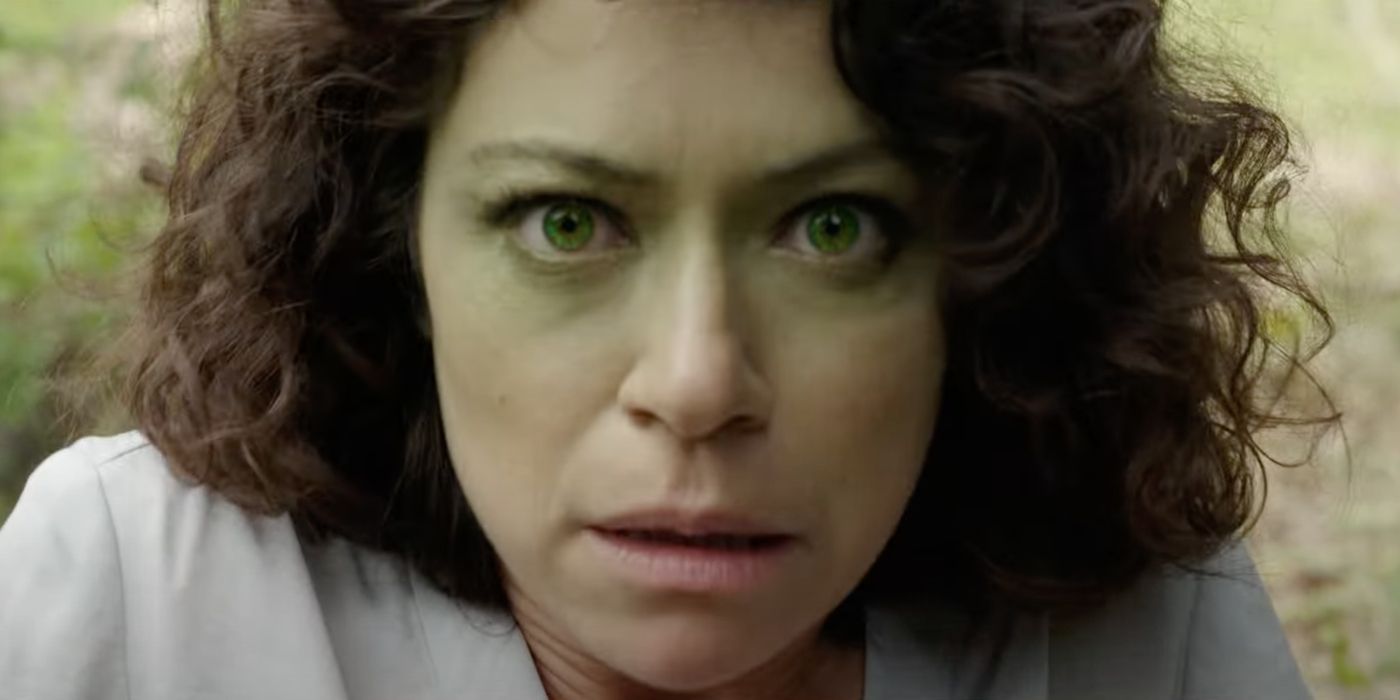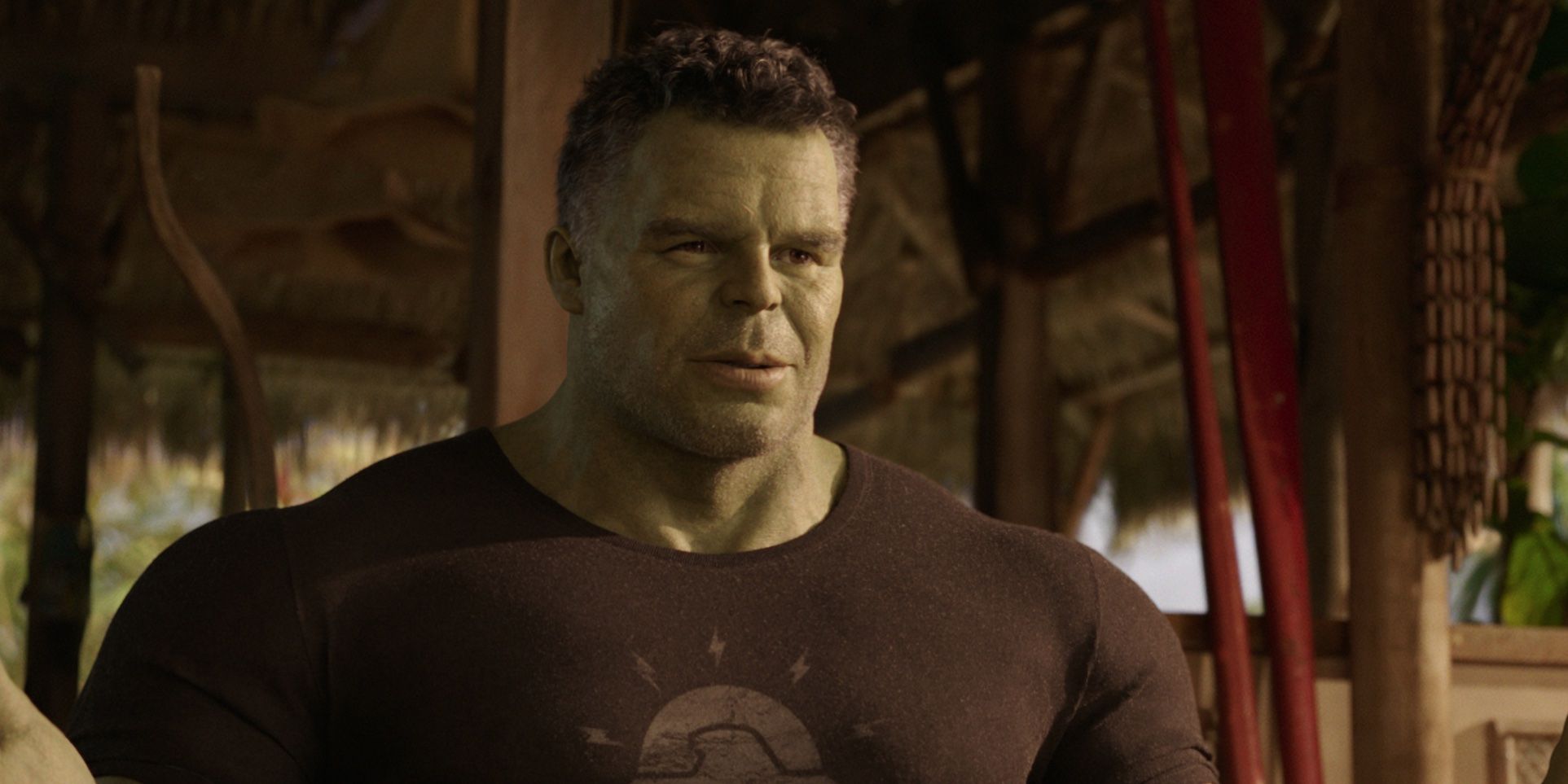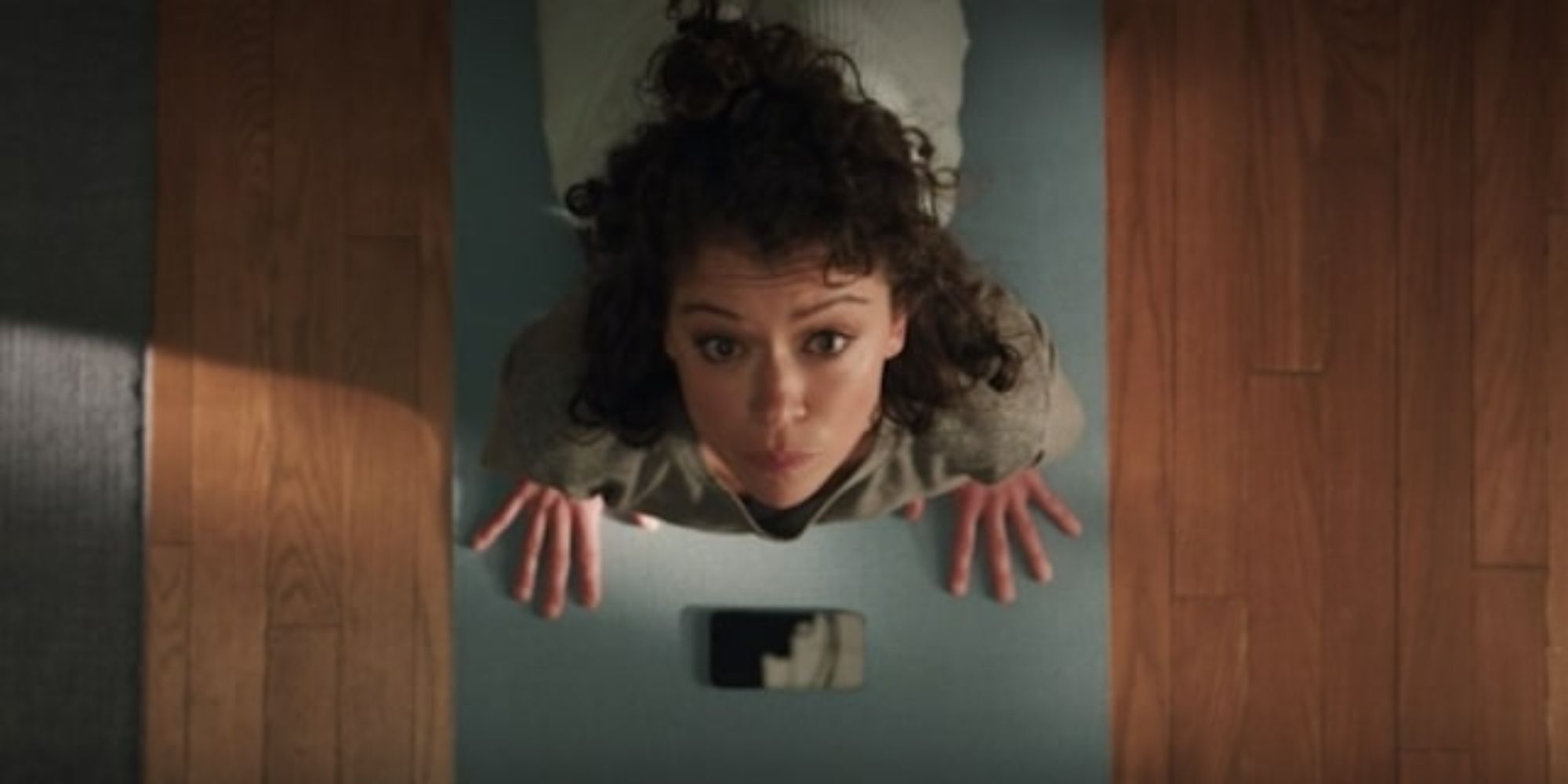Editor's note: The following contains spoilers for She-Hulk: Attorney at Law Episode 1.The first episode of She-Hulk: Attorney at Law gets down to business — the writers and protagonist Jennifer Walters (Tatiana Maslany) know that viewers are itching to learn her origin story; how does everyday lawyer Jennifer become She-Hulk? Instead of leaving us hanging, we see how Jennifer and her cousin Bruce Banner's (Mark Ruffalo) road trip ends in a car accident, leading to her becoming the second Hulk in the Marvel Cinematic Universe. Bruce is ready to support her through this difficult transition since he has been the Hulk for over a decade — except Jennifer doesn’t seem to need much help.
Unlike her cousin Bruce, Jennifer takes to her new persona like a duck to water. Barring her first two transitions when she blacks out, she is not only conscious in Hulk form, but she can change with ease. This is part of Jennifer’s comic book storyline as well, but in the show, head writer and creator Jessica Gao provides a realistic reason behind this difference between the cousins.
Bruce Banner’s journey in Hulk, The Incredible Hulk, and the MCU has a common thread. Once he was infected with a lethal dose of gamma radiation, his emotions, especially his anger and his fear, would trigger the Hulk alter-ego. And, as Bruce revealed in The Avengers, he is always angry. This is why, for nearly a decade, Bruce has battled with the Hulk for control over his body till he was able to merge the two into Smart Hulk. This is the only experience that Bruce knows, and he is immediately protective and overbearing when it comes to Jennifer’s encounter with gamma radiation. He knows what it’s like to have his life turned upside down by this transformation, but he’s also aware of the dangers that a rampaging Hulk can inflict on the world. It has taken more than 10 years for Bruce to find a semblance of peace with his two sides in a way that not only keeps the world safe but actively aids in protecting it. As Jennifer’s cousin, it’s clear Bruce believes it’s his duty to ensure Jennifer fast-forwards through the worst parts of being a Hulk — and one can’t blame him for wanting a fellow Hulk companion, seeing how lonely he has become.
We can’t fault Bruce for his assumptions about how Jennifer will react to being She-Hulk. But as it turns out, Jennifer is nothing like Bruce. Her genetics are different (and better), though that’s not the only reason her transformations are easier. As Jennifer explains to Bruce, the triggers for Hulking out are anger and fear and these are “the baseline of any woman just existing”. She, and the majority of women, have to contain their emotions on a near-constant basis. The episode starts with Jennifer rehearsing her closing argument for a big case, only for her annoying colleague Dennis Bukowski (Drew Matthews) to talk during it and second guess whether he should be taking Jennifer’s place. Jennifer and her paralegal Nikki Ramos (Ginger Gonzaga) joke about it, but do not confront him — because, as Jennifer explains to Bruce, any show of anger will have her labeled as “emotional, difficult” or get her killed. Anyone who has to put up with Dennis’ snarky put-downs is far more Zen than Bruce could ever be. And that’s just one person that Jennifer has to deal with in her profession.
Physical safety is also another problem for many women. Jennifer cites being catcalled on the street as one of the incidents when she has to keep her emotions in check. In the She-Hulk premiere, after her first transformation, Jennifer wanders into a bar to clean up and is immediately greeted by a group of women who practically fall over themselves trying to help her because she’s in distress. It’s such a heart-warming celebration of sisterhood, but it is juxtaposed with a subsequent scene when a group of men starts crowding around Jennifer instead of leaving her alone. Jennifer even uses the classic line about seeing her boyfriend waiting for her even though she’s single. Of course, then she Hulks out and scares the men (how the tables turn!), but the average person can’t do that. These are moments that a lot of women will identify with and introducing these elements to Jennifer’s story makes her origin story that much more relatable and interesting. Aside from the emotional balancing act, Jennifer has to navigate, she’s also living quite a relatable existence. She has a fortune to pay in student loans, a family that doesn't quite understand her, and she is still smiling in spite of it. So yes, it’s no wonder being a Hulk is so easy for her!
But just because Hulking out and transforming back is simpler for Jennifer, it doesn’t mean she’s interested in giving up her career as a lawyer to be a full-time superhero. For Bruce, being a superhero is the only way to help people, even though Jennifer is already doing that as part of her day job. But what is a superhero? Someone who has greater abilities or technology, and who can punch things and people really hard? Or is it someone who’s ready to fight the long, hard fight with their brains and words? For Bruce, it’s the former, but in Jennifer’s experience, it’s been the latter. This is another dichotomy that shows how physical power is often seen as being more useful than wits and intelligence. Not all heroes wear capes… or have impenetrable green skin.
She-Hulk is the first Marvel property to hint at gender being a spectrum (it’s less than a hint, really), but it's one of the rare entries in the franchise that tackles gender dynamics. While Agent Carter and Jessica Jones were lauded for their portrayals of gender issues, we also had to contend with the badly written Natasha Romanoff/Black Widow (Scarlett Johansson) storyline in Avengers: Age of Ultron regarding the Red Room and its sterilization of the Widows. Captain Marvel, the first MCU film to be headlined by a female superhero, did include elements of misogyny in the Air Force and among the Kree, and Ms. Marvel touched on the discrimination faced by the female members of the mosque — but this show is going all in, which is well past due for the official Disney/Marvel properties.
Thus far in the MCU, anger, and fear haven’t been viewed as a constructive set of emotions—from Hulk to Captain America to Spider-Man, the heroes who’ve given into these darker emotions have been punished by the events of the film or by other characters. But those were all male characters living in the world in very different ways from their female counterparts. With She-Hulk, we’re seeing that anger and fear can be controlled, and even conquered, but that they have a very real place in how half the world’s population lives moment to moment.
For Jennifer, containing her emotions and resisting her rage is part and parcel of her life as a woman navigating the world, and we see instances of that delicate balance in the first episode itself. The premiere demonstrates what Jennifer, and women in general, have to deal with, such as microaggressions and feeling unsafe, and this feeds into her being a competent, albeit reluctant superhero. The series takes a very real problem and gives it a fantastical spin. It’s yet another reminder of why pop culture needs diverse storytellers behind the scenes who can bring a whole new perspective to a known tale. Being She-Hulk doesn’t make misogyny go away, but it does give Jennifer some big green fists to fight with.
She-Hulk premieres new episodes every Thursday on Disney+.



